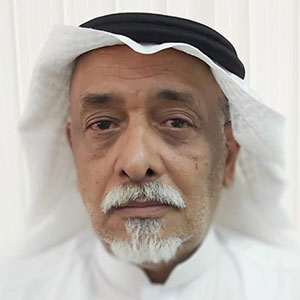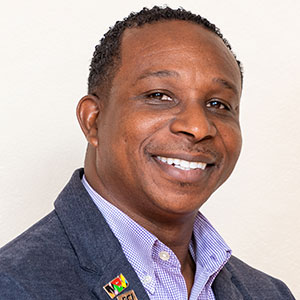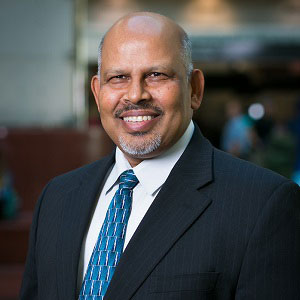London Gatwick Airport’s innovation journey: autonomous tech, robotics and smart airport solutions
Posted: 30 April 2025 | Abhi Chacko | No comments yet
In an exclusive interview at the International Airport Summit 2024, Abhi Chacko, Head of Innovation at London Gatwick Airport, shared insights into the airport’s forward-thinking approach to innovation and autonomous technology, and its impact on the airport ecosystem.
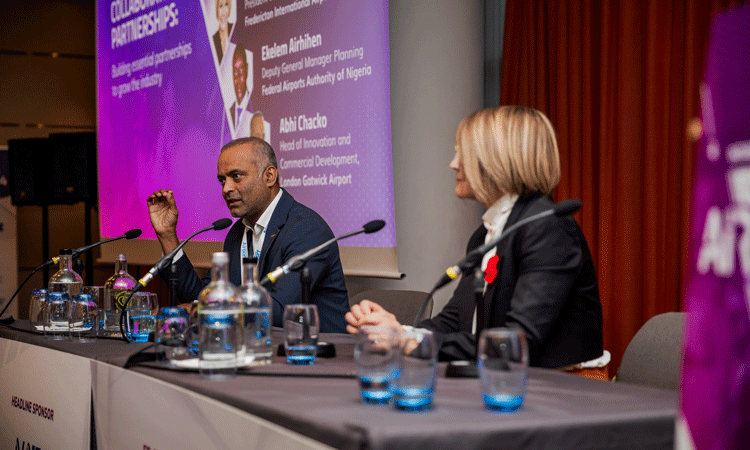

Abhi Chacko speaking at the International Airport Summit 2024. Credit: IAR.
Airports around the world are actively exploring autonomous technology and its various uses in and around the airport terminal – and London Gatwick Airport (LGW) is no exception. The airport is proactively integrating robotics and automation to drive operational efficiency, enhance workforce skills and elevate customer experience.
In particular, Gatwick is directing its attention to autonomous wheelchairs, semi-autonomous jet bridges and autonomous bag transfer.
Autonomous wheelchairs
Gatwick’s exploration into autonomous technology has challenged their views.
“When we started thinking about this, I was thinking wheelchairs and the use of autonomous technology on wheelchairs would be the last thing we would do when we apply autonomous technology in airports,” Chacko admitted.
However, the trials exceeded expectations. “But after going through some trials, our confidence levels increased, and we were surprised that the technology for wheelchairs is actually more mature than the technology that’s available on the airfield or the campus.”
The implementation of micromobility autonomous technology is something the airport is considering. “Many of my colleagues were surprised and a lot of people changed their mind after seeing it working,” he added.
The autonomous wheelchair solution increases independence for passengers requiring assistance and frees up the staff who would otherwise have been pushing the wheelchair, to help passengers in other areas.
Airfield activities
Abhi believes a lot of airfield activities can be done using autonomous technology in the future, but also acknowledges the challenges involved. “Use of autonomous technologies in the airfield would take time, and mainly because the big tech currently working on public roads is reluctant to come to the airport campus because for them the market is very small,” Chacko explained.
Despite the reluctance of major technology players, LGW is actively collaborating with start-ups focused on campus environments. “Currently we are working with two start-ups based in the UK for taking that sort of solution forward,” he stated. These collaborations are geared towards exploring autonomous baggage transfer, robot taxis for passenger transport and autonomous shuttles for cabin crew.
Autonomous bag transfer
LGW is in the single-vehicle trial phase, drawing on the experiences of airports like Singapore Changi and Hong Kong who are further ahead on their journey. Recognising that technology transfer isn’t always seamless, LGW adapts to unique environmental characteristics. “Although the technology works in one airport, it isn’t immediately transferable to another,” Chacko stated. Surface differences between airports require additional technology. “The tarmac at Gatwick wasn’t as smooth as Changi’s, so the cameras needed extra mechanisms to handle the rough surface,” Abhi explained.
Smart stand innovation
Gatwick has advanced its smart stand innovation, completing technical implementation on one stand and conducting trials with easyJet. “We started this concept two years ago. We’ve now completed technical implementation on one stand and ran trials with easyJet before summer 2024. We paused during summer and will restart operational trials from now until next summer,” Chacko stated.
The smart stand innovation enables remote turn co-ordination. “It’s a collection of technologies that allow the Turn Co-ordinator to monitor and perform turn activities from a remote control room,” Chacko explained. This approach lets the turn management team focus on exceptions and manage multiple turns simultaneously. “The team can manage multiple turns at the same time,” he added. The ability to move the Turn Co-ordinator between stands with one click enhances efficiency. “They also don’t have to travel from stand to stand, as currently when they finish one stand and go to the other. We can almost teleport the Turn Co-ordinator between stands with a click of a button,” said Chacko.
Benefits
Smart stand innovation improves airport operations. “It reduces turn time, decreases the number of cars on the airfield and enhances safety with anti-collision sensors,” Chacko noted. The technology also improves passenger experience. “With automated safety procedures, aircraft can park, remotely connect the jet bridge and allow passengers to disembark remotely, even if ground staff are delayed,” he explained.
The smart stand innovation accelerates ramp operations. “The smart stand solution speeds up ramp activities,” stated Chacko.
App-based passenger processing
App-based solutions are one element which Chacko believes will yield good results in the next few years. App-based solutions streamline processing, reduce queues and improve boarding.
Innovation failures
LGW takes a strategic approach to innovation, learning from other Vinci Airports. “We carefully select ideas to invest in, comparing notes with other Vinci Airports,” Chacko stated. Despite careful planning, failures are part of the innovation process. “Failures are part of innovation and learning,” he added.
Robotic technology for removing FOD
One example was the exploration of robotic technology for removing foreign object debris (FOD). “We considered robotic technology for FOD removal and spent some time exploring this, but soon realised that an alternative safety procedure is more effective than a technology solution which is overengineered and clunky, so we have decided not to pursue that particular track any further,” Shako explained.
Inspiration from other industries
LGW draws inspiration from Silicon Valley and start-up events to stay updated on emerging technologies.
Abhi is particularly interested in Waymo or Cruise driverless cars for airfield equipment. “Waymo or Cruise autonomous cars, designed for complex public roads, could revolutionise airfield equipment operations,” he added.
Change management
“When implementing new technology, you must take people on the journey with you”
Abhi emphasised the importance of managing change when introducing new technology. “When implementing new technology, you must take people on the journey with you,” he said.
Abhi has three top tips for airport professionals looking to implement new ideas or technologies with their teams:
- Check the business value of your idea
Assessing the impact on stakeholders is crucial. “Evaluate your idea’s value by considering the four groups: airport, airlines, ground handlers and passengers. If you plot a Venn diagram of them and whether your idea is of value to them, you should see your idea to be in the intersection of multiple circles – ideally all four circles and therefore of benefit to all four groups,” Chacko advised.
- Build consensus
Engaging stakeholders through demonstrations and trials is key. “Airports are like mini cities, there are different stakeholders, different priorities and politics. It’s not enough to talk about an idea through a set of slides. That won’t get everybody onboard and won’t help everyone to understand or appreciate the value of the new way of working. So, you have to show it to them in a lab or in a trial environment, and then iterate and involve them from the beginning and iterate the solution as you develop. That’s how you bring them along,” he stated.
- Lead from the front and be willing to fail
Innovation requires leadership and risk-taking. “Don’t be a bureaucrat, leaving your destiny to an Excel sheet-based prioritisation or playing it safe and only picking ideas that will 100% work. Support ideas you believe in, put your reputation on the line, even if they involve risk. The main thing is your subjective endorsement of an idea, and then lobby all the people who are involved in making it happen. In short, have a lot of coffees with all the relevant people to make sure that they are able to see the value and they’re able to support the idea that you are trying to pursue,” Chacko advised.
International Airport Summit
Chacko highlighted the value of industry events for knowledge sharing. “Smaller events like the International Airport Review conference allow for more relaxed and in-depth discussions,” Shako noted. These events foster meaningful exchanges of successes and failures. “International Airport Review creates an environment where you can share ideas on what has worked, what hasn’t worked, and does so in a way that you can pay attention and focus, which is actually extremely valuable,” he added.
Feeling like you missed out? Well, you did! Register here for International Airport Summit 2025 and ensure you don’t suffer from FOMO again next year!
Register here
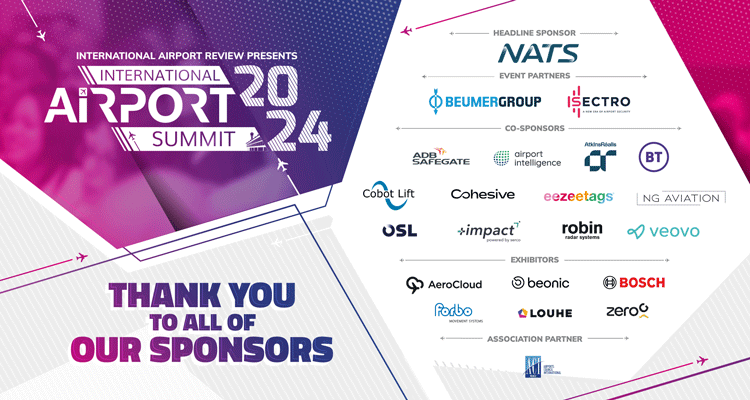

Join our free webinar: Transforming Airport Security – Innovation, Impact, and the Passenger Experience
The landscape of airport security is undergoing a profound transformation, driven by evolving threats, technology, and passenger expectations. This webinar focuses on how AtkinsRéalis has been transforming security processes at some of the world’s busiest airports with smarter, more adaptive solutions.
Date: 4 Nov | Time: 14:00 GMT
REGISTER NOW TO SECURE YOUR SPOT
Can’t attend live? No worries – register to receive the recording post-event.
Related topics
Autonomous Technology, Baggage handling, Innovation, International Airport Summit, New technologies, Passenger experience and seamless travel, Passengers with reduced mobility (PRMs), Robotics










